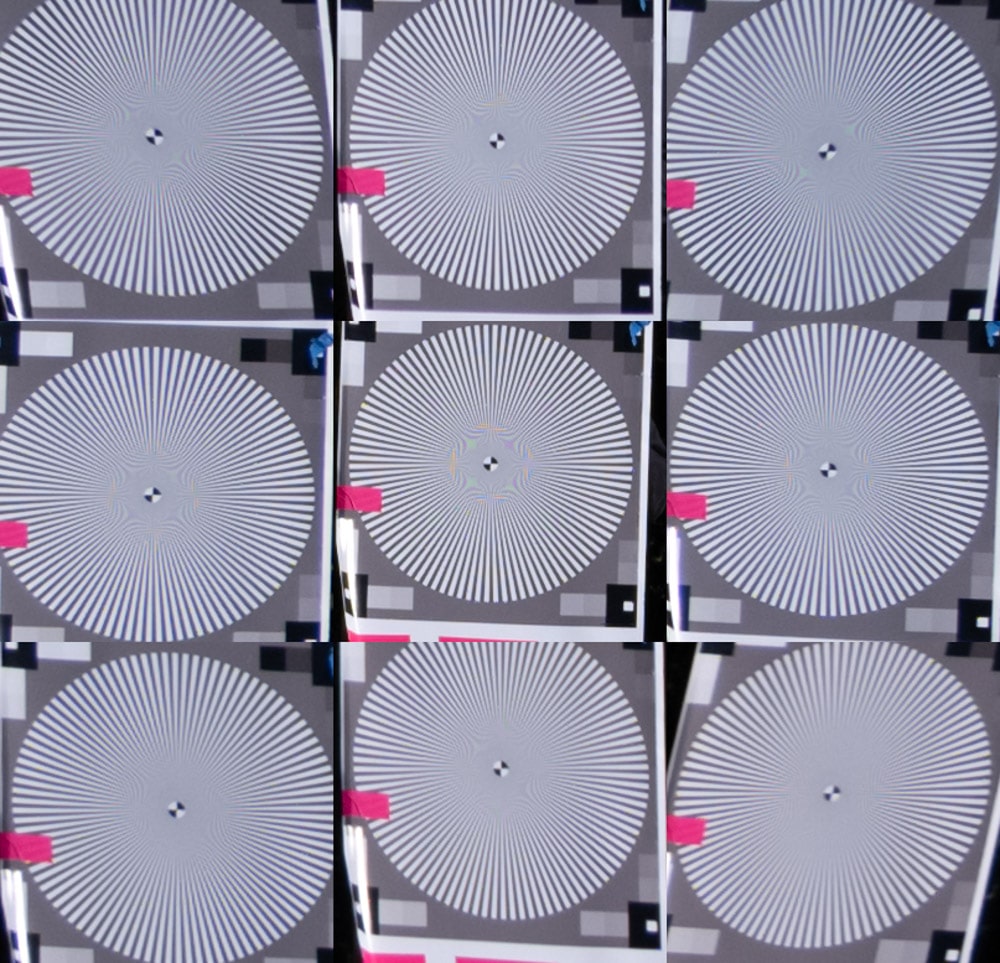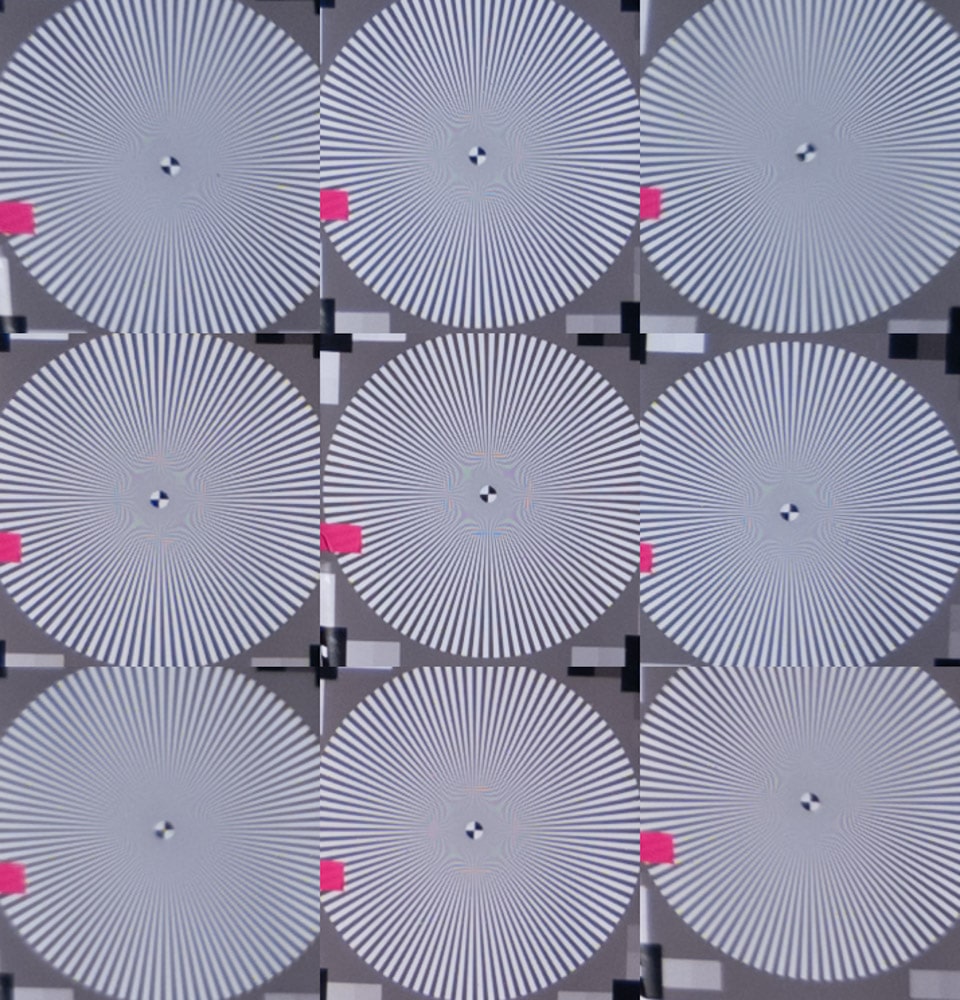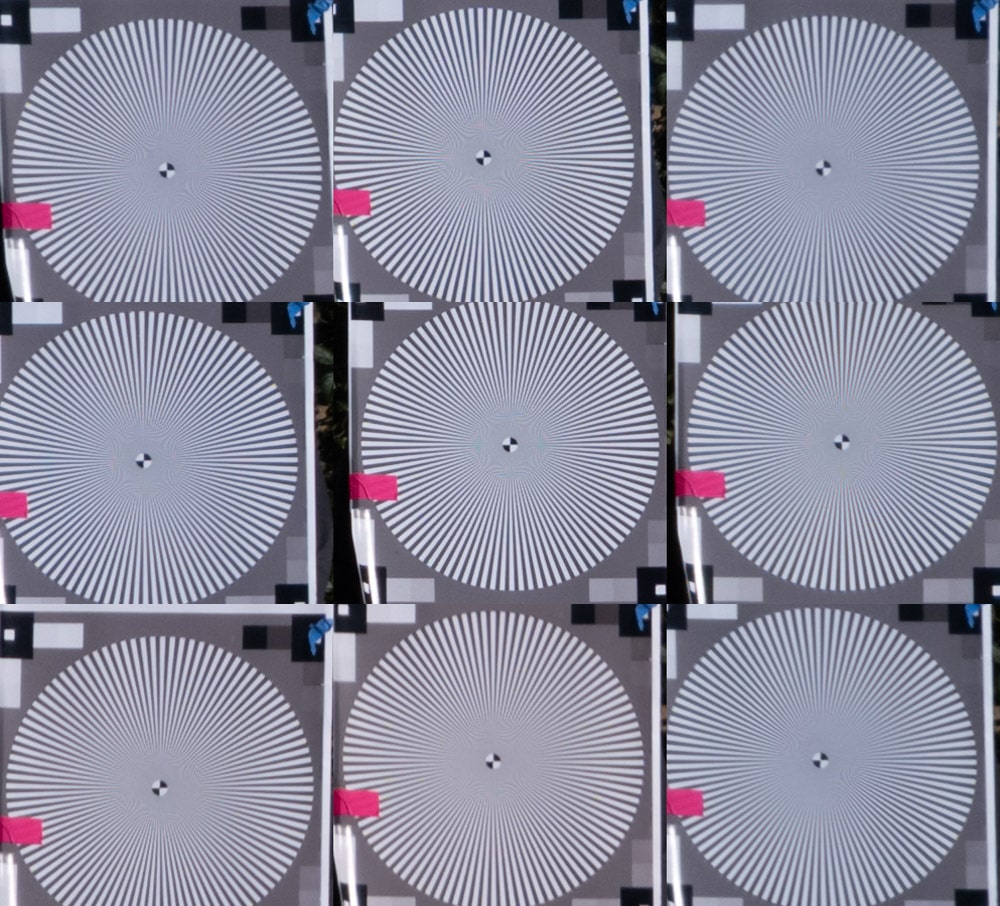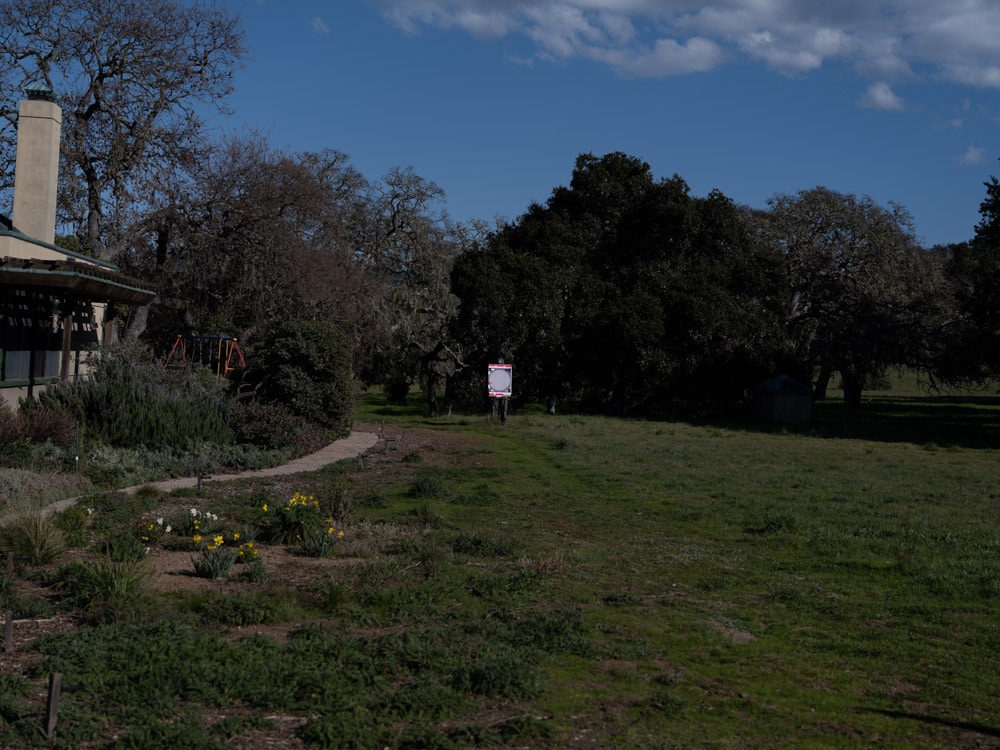The new Fujifilm 45-100 mm f/4 R LM OIS WR (hereafter yclept the 45-100/4) arrived today. I performed my usual lens screening test.
Here’s the scene, at 60 mm. I moved the target as I changed focal lengths. Target distance varied between 28 and 40 meters.
I made the exposures with the following setup:
- The heaviest RRS legs
- Arca Swiss C1 head
- ISO 100
- Shutter 1/4000, electronic
- f/4
- Manual focus with the target at the center for the first shot.
- Other shots with target at top, bottom,extreme right and left, and the corners
- Focal length 45, 60 and 100mm
- 3 sets of shots at each focal length
- Developed in Lightroom
- Picked best center shot of each series
- Sharpening amount 20 radius 1, detail 0 (much less sharpening than the default)
- Adobe Color profile
I assembled composites in Photoshop.



All are pretty sharp in the center, but softer on-axis at 100 mm. The softest corners are:
- 45 mm: lower right
- 60 mm: lower left
- 100 mm: lower left
The tops and sides are pretty sharp. The corners, not so much, but still not bad for a zoom. There is little light falloff off-axis.
It appears that this lens is reasonably well constructed. It is definitely not a lemon.

Thank you for the test.
Have a choice between Fuji 32-64 and 45-100 and wondered which one to go for.
I was told the latter was better for portraiture.
That’s probably true, unless you’re into environmental portraiture.